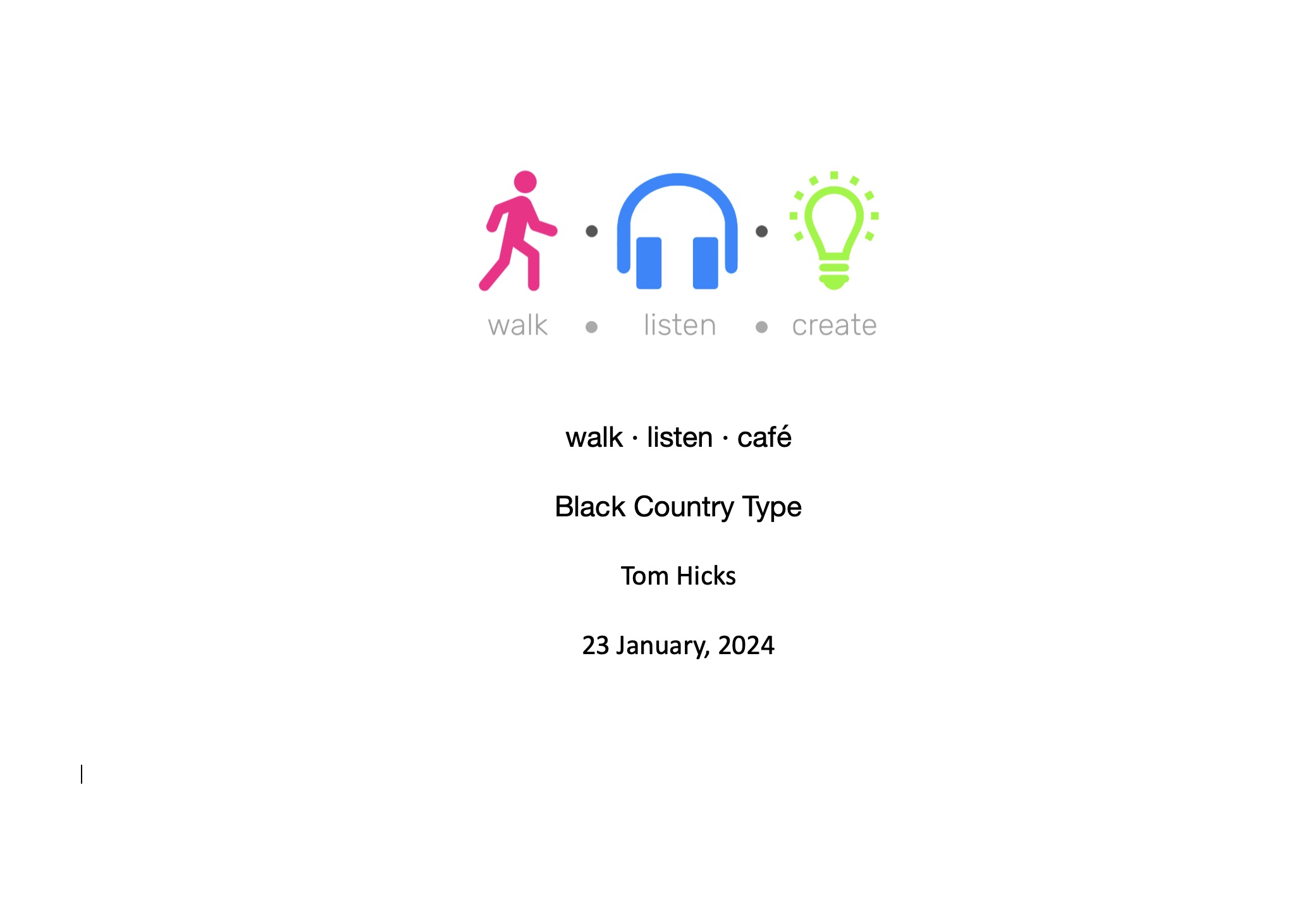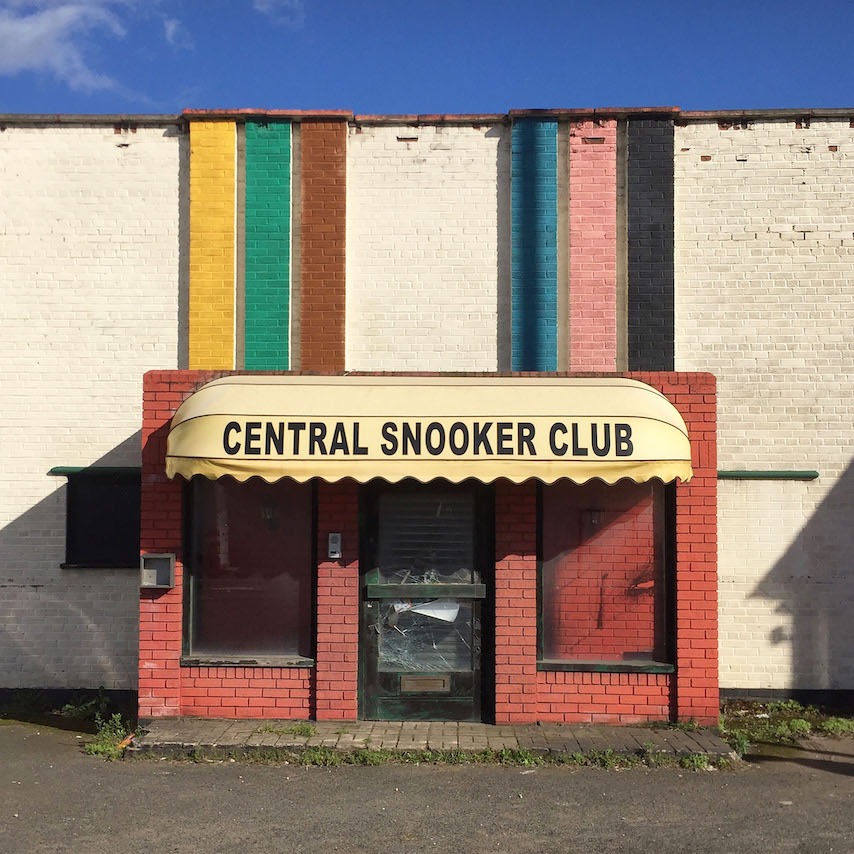We open the walk · listen · cafe doors in January, to explore a cultural history of the Black Country through the lens of walking artist and photographer Tom Hicks. Black Country Type is his ongoing photographic project.
A series of images distributed via Instagram, in which he applies his unique aesthetic to the Black Country region of the West Midlands, with a strong emphasis on colour, focusing on words, typography, handmade lettering and signs. He also photographs ‘types’ of architectural features, objects and the post-industrial landscape of the area.
“Some parts of the Black Country feel like the land that planning forgot. There are improvised and patched-up structures all over the region.“
His images are taken on freeform walks. Informed by psychogeography and the notion of the drift, these photographs document the cultural history of the Black Country region and reflect the impact of industrial decline. His work moves seamlessly between images of derelict factories, underpasses and 21st century warehousing facilities.
The word ‘type’ refers to the thread that runs through Tom Hicks’ work: typography and words in the environment. He has a keen eye for classic typefaces, signs and the handwritten. His images are often playful and highlight the potential for humour and double meanings in words.




Known for his trademark compositional style, Tom Hicks relies on direct sunlight to illuminate his subject matter, often with the result that landmarks in the West Midlands could be mistaken for scenery in Mediterranean – a humorous juxtaposition that isn’t lost on his audience.
“Sometimes I focus on a building that was once grand but has fallen into disrepair,” he said. “Or I focus on a door that may seem like a minor detail, but that reflects the overall architectural style of the building – so it acts as shorthand for a time period and architectural genre.“
Of the featured image for this cafe Tom writes:
“I love the simplicity of the design of this building – Central Snooker Club, Lye (2019) – not only in terms of the structure of the building but also the paint job. It took me a while to realise that the colours relate to the order in which you pot the balls in snooker.
This photograph is an example of how the project is documenting change in the Black Country; the building is now a warehouse and has been painted black.“
Tom Hicks has developed a socially engaged practice that encourages people to examine their local environment via photowalks. His regularly works in educational settings and his photowalks form part the curriculum on schools, colleges and universities.
September 2023 saw the publication of the retrospective photobook Black Country Type (The Modernist).
Photography he say is “a medium that allows me to synthesise a wide range of interests, including architecture, design, typography, art, popular culture and history”.
|
Video recording of cafe: Black Country Type Only available to registered users. |
Related

Black Country Type
A video recording of the first walk · listen · cafe in 2024, exploring a cultural history of the Black Country (in the West Midlands of the UK) through the lens of walking artist and photographer Tom Hicks. Black Country Type is his ongoing photographic project. A series of images distributed via Instagram, in which he applies his unique


